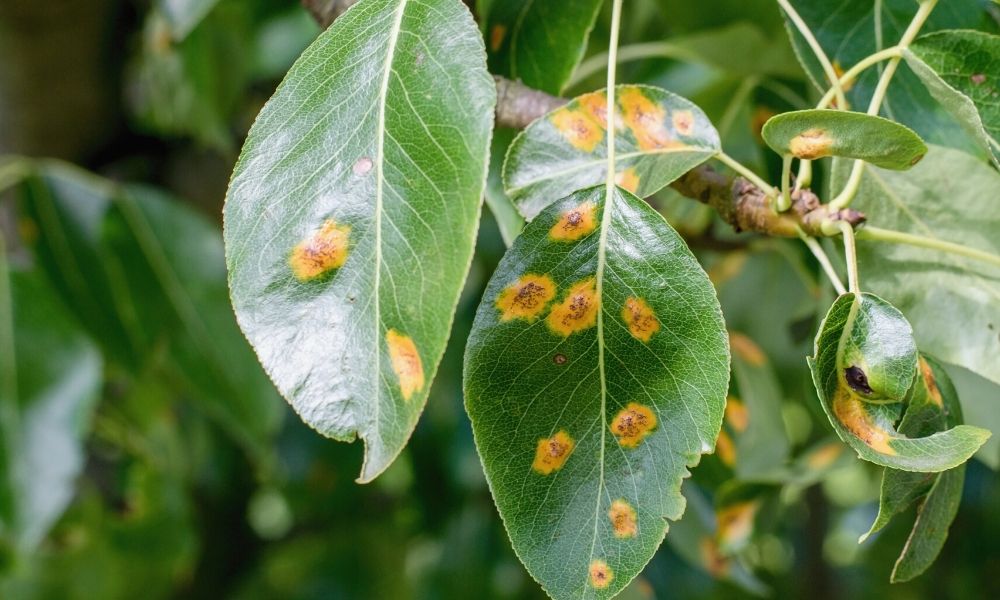The Texas ash tree—sometimes referred to as a mountain ash—is native primarily to Texas, with some prevalence in Oklahoma to the north. This regional tree is relatively small, growing quickly to between 30 and 45 feet tall, depending on soil and environment. A defining characteristic is its five- or seven-leafed stems. The species is abundant in dry, limestone-filled environments and has a life expectancy of 30 to 50 years, depending on its soil quality, water supply, and growth patterns.
Texas ash trees, which beautify landscapes all across Texas and provide welcome shade, are unfortunately at risk of certain diseases. To learn what threatens them and how the diseases function, read our guide to some common Texas ash tree problems, such as common ash tree diseases.
Anthracnose
Anthracnose is a fungal disease caused by gloeosporium. When anthracnose begins to set in—usually after periods of consistent rain—your Texas ash will develop dark yellow or brown spots called lesions. These lesions darken, grow, and spread throughout the tree, hitting its lower branches the hardest. After causing heavy damage to the tree, anthracnose will then cause earlier defoliation, which essentially limits the tree’s immune system and leaves it vulnerable to future damage and disease.
Cotton Root Rot
Caused by phymatotrichum omnivorum fungi, cotton root rot is another common Texas ash tree disease. Cotton root rot transfers from plant to plant and remains in the soil for years after it enters. It often affects the plants in the area surrounding the tree, killing smaller plants within a week. Once the disease has firmly colonized near the roots, the trees’ leaves begin to yellow.
Leaf Spot Disease
Like many related ash trees, Texas ash trees can suffer from several different forms of leaf spot disease. Leaf spotting occurs when one of several fungi colonize in the trees’ leaves. This condition can range from very small spotting that grows over time to irregular spots to dark accumulations under leaves.
Wood Rot
Wood rot—also a product of multiple species of fungi—attack trees where they’re vulnerable, i.e. in open surface wounds or in places with no protective bark. Counter to cotton rot’s speedy progression, wood rot kills a Texas ash trees slowly, eventually causing tough growths called conks to grow near the base of the trunk.
Emerald Ash Borers
An aggressive pest that decimates ash trees in northern and eastern states, the emerald ash borer is a small beetle whose reproduction process wreaks havoc on ash trees. Adult beetles lay eggs inside ash trees, and upon hatching, the larvae eat their way to the surface of the bark, damaging important vessels for water and nutrient transport within the tree. This kills small trees in as little as a year and larger specimens in three to four years. Hallmark signs of an ash borer infestation include a thinning crown, sudden shoot growth at the tree’s base, and small D-shaped holes on the surface of the bark. Though the emerald ash borer doesn’t affect the vast majority of Texas counties, this pest will become more commonplace in the next five to 10 years.
If your Texas ash suffers from one of these Texas ash tree problems, contact us. SID Mourning Tree Service. Our experienced team can help you determine your Texas ash’s specific problem. We also offer other professional services ranging from tree trimming and pruning to emergency tree service in Austin, TX. We can address any need spanning the entire lifecycle of a tree.

